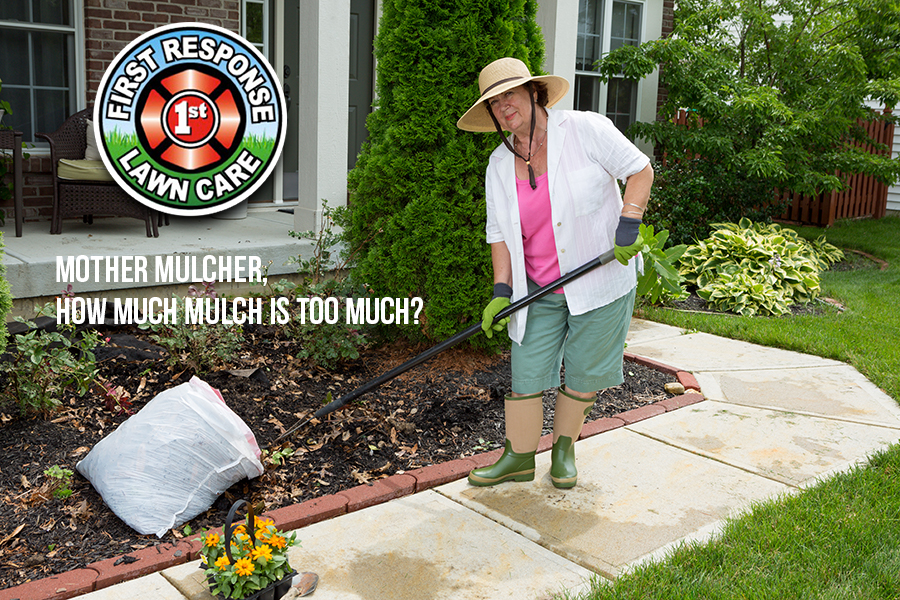My mother is an overzealous mulcher. She’s obsessed with buying 10-15 bags of redwood mulch every few months to keep her beds looking fresh and bright. This is such a waste of money, but also could be hazardous to the shrubs and trees the mulch encases.
The Harms of Over Mulching
- Burying shrub or tree roots deeply under mulch decreases the oxygen supply. Roots need oxygen in order to provide it to plants.
- Lack of oxygen prevents beneficial soil microbes from breaking down the mulch. Instead, harmful soil microbes produce substances that are toxic to roots.
- Trees surrounded by mounds of mulch may send shallow roots into the mulch, instead of the soil. This makes them more susceptible to drought, stress, and wind.
- Piling up mulch against the trunk provides a safe haven for harmful insects. It can also promote rot due to excess moisture retained by the mulch.
Mulching Rule of Thumb
Before topping off your beds with more mulch, first measure how much mulch is already there. A two to four-inch layer is ideal, and provides many benefits to plants like:
- Weed suppression
- Moisture retention
- Slow addition of organic matter to the soil as the mulch decomposes.
- Keeps mowers and weed trimmers away from trunks which can be easily damaged by such equipment.
Since mulch does so many good things, it is easy to think more would be better. In reality, thicker layers of mulch actually harm plants. When mulch builds up over four inches it often becomes a water repellent. When this happens water simply sheds off the top of the mulch rather than soaking in to the soil below, leaving plants thirsty.
Thick layers of mulch can also suffocate plant roots. We don’t often think about the role of air in the soil, but roots need air to survive. Burying root systems under excessive layers of mulch reduces the amount of air in the soil, causing plants to decline. This decline is usually slow, often taking years for plants to die from over mulching.
If you already have a four inch layer of mulch on your beds, but wish to add more to brighten up the bed’s appearance, you have two options.
- Option 1: Remove part of the existing mulch before adding new mulch. You can add the old mulch to your compost pile or use it as an under layer for new beds.
- Option 2: Stir up the existing mulch. Often only the top layer loses its bright appearance and if you mix the mulch up a bit, you will bring some of the more richly colored lower layers to the surface.
Another common mistake is to treat mulch like a soil amendment, mixing it into the soil when you plant. When mixed into the soil, they slowly release nutrients, help retain moisture and also improve drainage. Most mulches are too coarse to make good soil amendments. Often mulch and soil are mixed together by accident when new plants are set out. Over time, you can build up a layer of mixed soil and mulch that is several inches thick. Plants typically do not grow well in this mix because it stays too dry and because the decaying mulch actually pulls nitrogen out of the soil. To avoid mixing mulch with soil, always rake mulch away from the area before planting. If you have beds where mulch has become mixed with the soil, rake down to the soil level and be sure to plant into soil rather than mulch.
Need lawn care help or just chew the mulch with us, call today (214) 701-7622!

